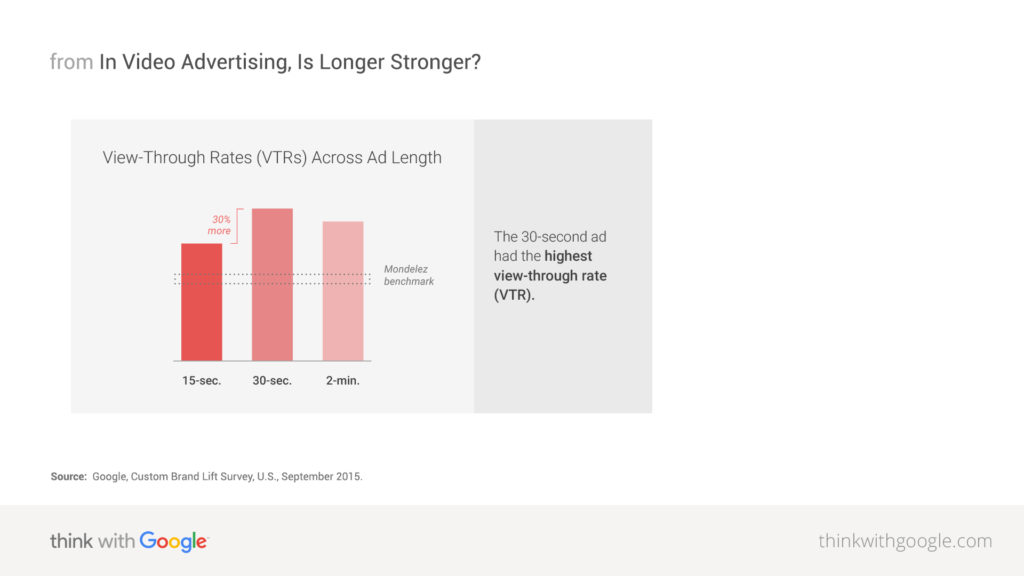Since the dawn of television and the eventual shift to online platforms like YouTube, commercials, and advertisements have been staples when it came to consuming large amounts of video media. Depending on where you watch your videos, ads are scheduled to play after a variable amount of time and can sometimes be skipped altogether.
Being so impactful to the viewership experience, the effectiveness of skippable ads has always been hard to measure, but thanks to modern tracking technology, we can now uncover how skipping ads, and ad length affect advertisers.
Why People Watch Ads

Exposing viewers to ads has two goals: to inform and to engage. While they often end up as white noise while you do other things, some people pay attention these ads so they can be informed about a certain product or service.
The presence of ads has also long been associated with free or readily available content. This type of content and ad relationship is mostly seen on YouTube, but also extends to streaming services, like Hulu.
Unsurprisingly, the price to be able to watch long-form content without the interruption of ads has grown substantially over the years. Because fully ad-free content is locked behind a more premium price point, many have become more accepting of the idea of watching ads in exchange for a lower subscription fee.
What is Ad Skipping?

Ad skipping is the process where viewers are given the option to fast-forward or choose not to watch ads altogether. With platforms frequently visited for different types of video content, like YouTube, you’re exposed to ads that can either be skippable or un-skippable.
There are a lot of different factors that contribute to why many are prone to skip ads, but the main reasons are:
- overly exaggerated or fake emotions (e.g. ads where the characters are too happy),
- overt branding, and a lot of movement happening in such a short period of time.
Conversely, ads that convey an intense emotional response from you are skipped much less often.
Impacts of Skipping Ads on Advertisers

With so many brands continuously pumping out ad after ad, the idea of having to sit through 5 to 30 seconds of marketing material just to watch a video has given these ads a negative reputation.
While this is the impression seen today, it took a lot for ads to get where they are currently. For one thing, the advertising industry’s desire to be able to keep up with the shift in platform dominance, otherwise known as the shift to the online space, has made the advertising landscape far more complex and dynamic, with new channels and technologies emerging every day.
Additionally, the internet, social media, and streaming services have made an impact on general consumer behavior, where viewers now feel entitled to instant results. The growing aversion viewers have to ads has made it harder for agencies to make any sort of impact on their target audiences. As such, any impact on advertisers is a consequence of how viewers react to skippable ads.
1. Ad skipping increases brand recall, depending on the length

With the general viewer now being harder to target, you need to find the right mix of length and impact, so viewers remain engaged enough not to click the skip button.
Ads generally range from 5, 15, and 30 seconds. An experiment by Google observed that the middle ground of 15-seconds has received the least amount of skipping behavior since it strikes audiences with the right balance of narrative and brand exposure. This also meant there were no superficial emotions conveyed throughout the ad, thereby creating a much more favorable impression to the viewer.
2. It helps determine profits
Data received by ad-skipping metrics and insights can help you pinpoint which households can be tapped to maximize return in profits. When your advertising strategy focuses on those who are more likely to skip, the strategies become counterproductive.
On the other hand, if you focus on individuals less likely to hit the skip button, then the chances of your product being sold increase.
3. It increases advertisers’ reach
Any platform that converts to having a skippable ad format can induce more viewers already native to the site. This means that implementing ad skipping to websites like YouTube, which already has a dedicated number of subscribers and visitors, can further increase or improve the reach you have over an online space.
4. It regulates consumers’ expected benefit from the product
Providing viewers with the option to have skippable ads can help you determine which group of individuals value the content you put out. When they do stay, viewers can be informed of what your product or service does, what benefits they offer, and more, making them that much easier to convert into paying customers.
5. It gives advertisers insights for better decision-making moving forward
With the data gathered from your ads, your company can tailor future projects to better serve the people who take the time to watch your ads. These can ensure that none of the work done by your team is wasted on uninterested audiences.
Skip Ad?

Advertisements make up a significant portion of your viewing experience, be it via television or through online streaming platforms. As advertisers, it’s important to understand how logistical things, like the length of the ad and the narrative of the story, can impact the number of conversions your business can have. If you’re seeking to enhance your ad campaigns, consider pay-per-click advertising services in the Philippines to reach a more targeted audience and maximize conversions.
Still need help with how you release your ads? Look no further than Spiralytics, a premier digital marketing agency geared toward meaningful and data-driven content.
Learn more about we can help with your online advertising services. Contact us today for a free ad strategy consultation!






